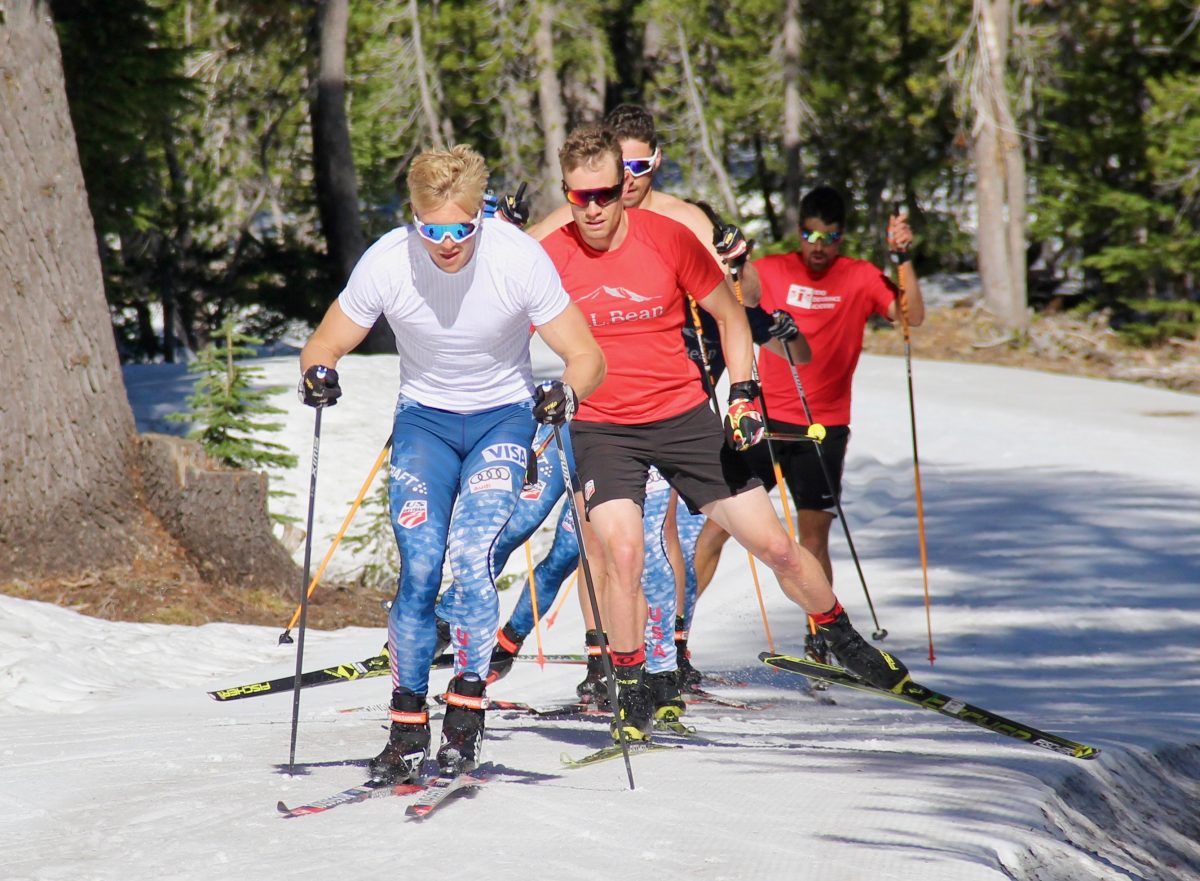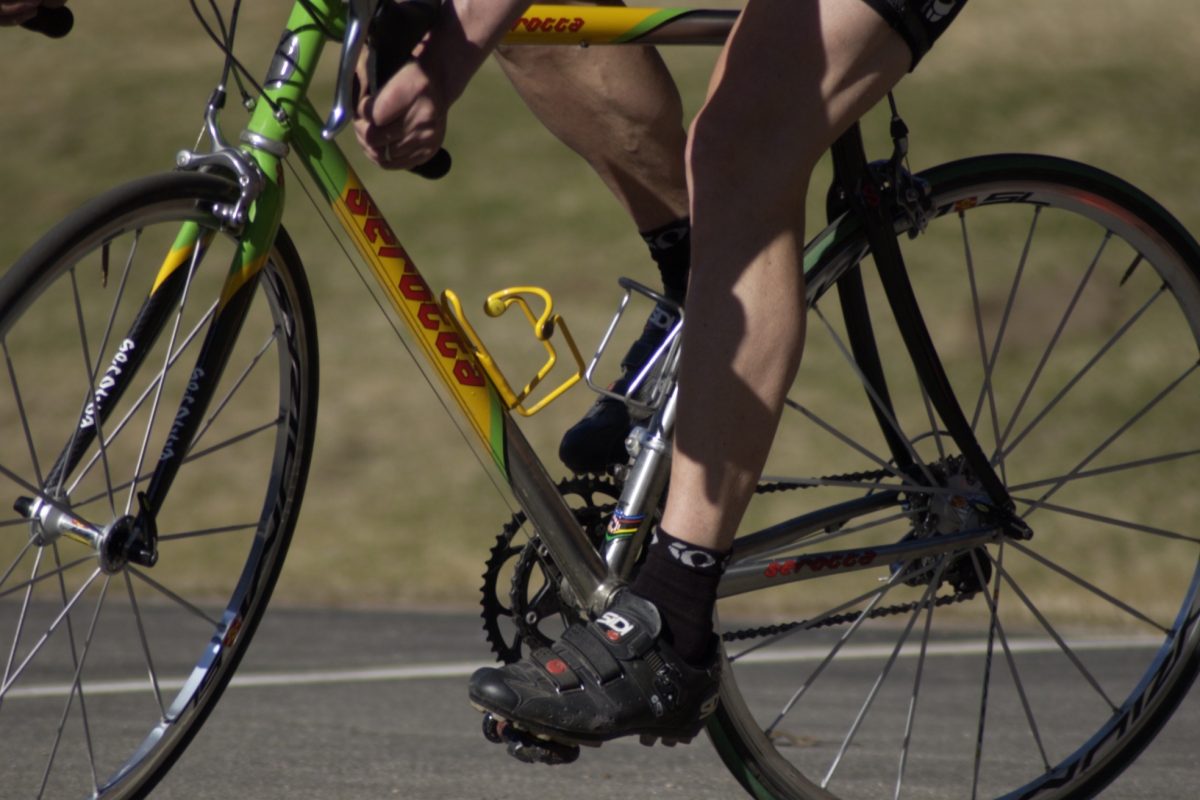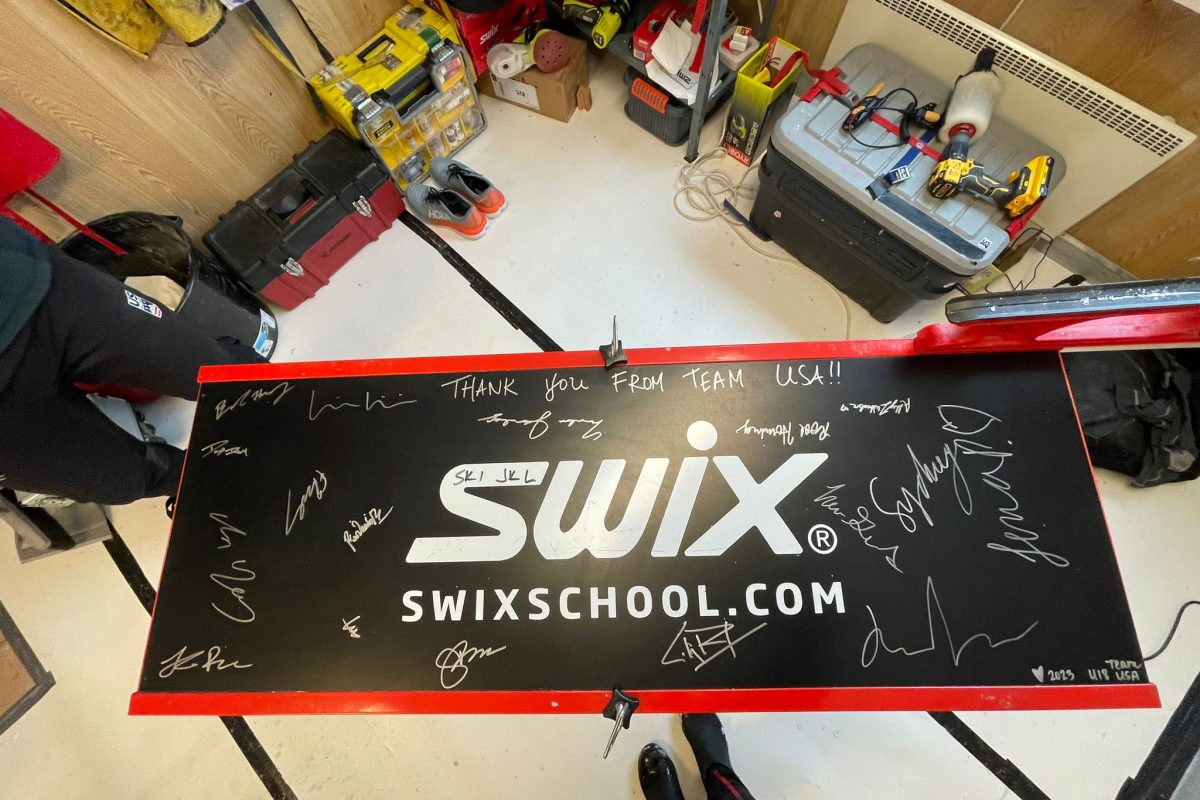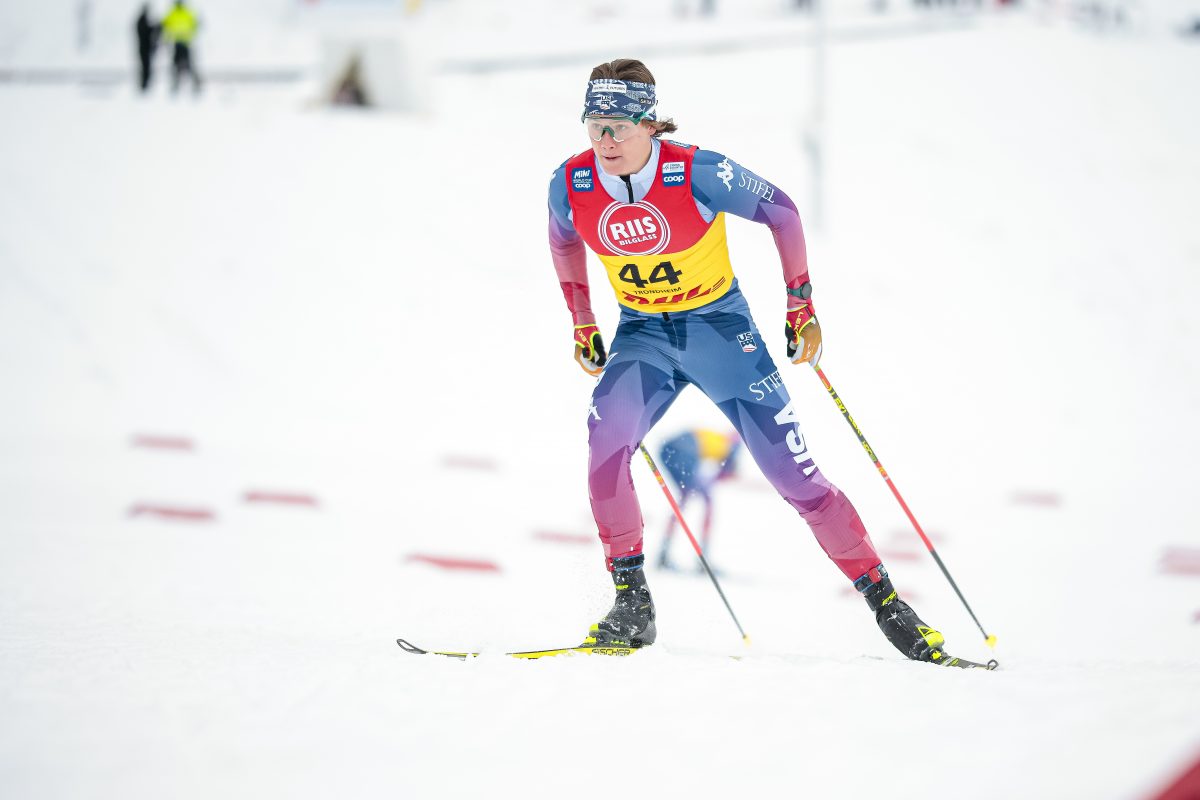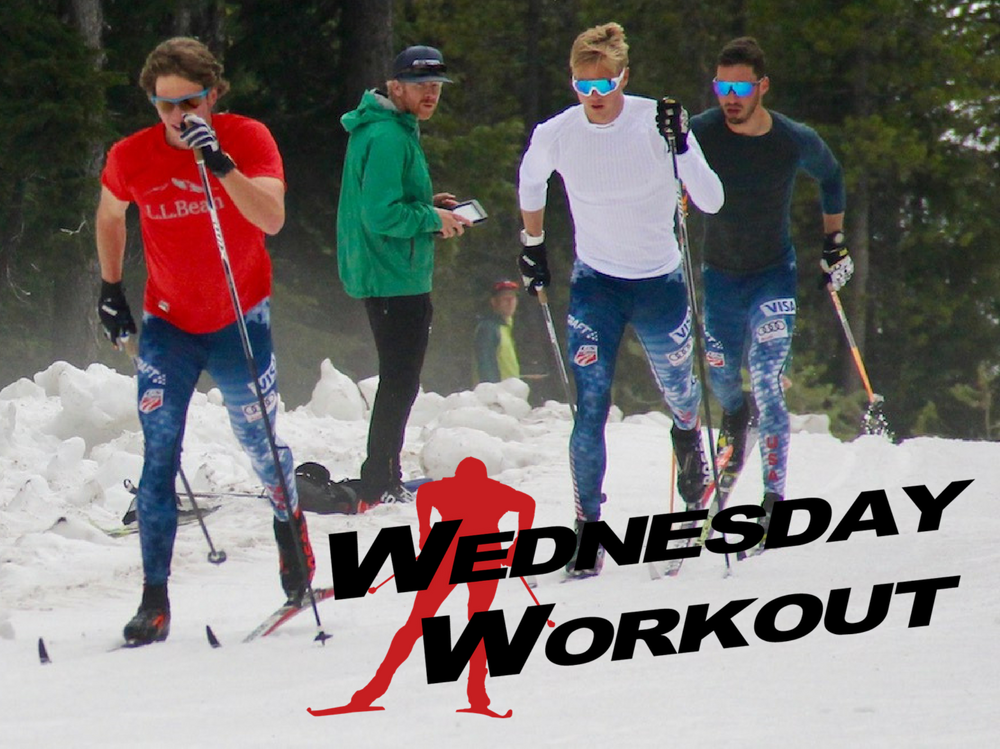
The U.S. Ski Team (USST) wrapped up its latest spring training camp in Bend, Oregon, on June 1. One of the primary aspects of the annual camp is for the USST coaching staff to work on technique in a low-stress environment. The following workout was provided by U.S. women’s coach Matt Whitcomb. Here are the goods:
***
Coaching Technique at a U.S. Ski Team Camp
The workout: 2-3 hours at an easy distance pace, with running or herringbone technique focus
Technique focus: Stable core/upper body in both running and herringbone technique
“This technique session framework is something we’ve used for several years,” Whitcomb explained in an email. “What makes this session effective is that we prime the team with a video clip for visualization and instruction immediately before the workout, and use iPads and light coaching feedback during the session. After the session, some athletes like to review the clips again or receive them over email. I use an app for iPad and iPhone called Coach’s Eye, which has a great slow-motion and frame-by-frame feature, and allows the user to email individual clips or export a bunch of clips to iMovie so a more-complete compilation of the session can be sent as a YouTube link.
Framing the Session
- Two or three-minute workout description in a space with a TV or projector. If it is longer, there is a good chance we’re over-caffeinated and over-coaching. Too much to focus on kills focus. We try hard to work only on one technique goal per athletes per session. While many of us coaches agree it feels purposeful as a coach to do a daily knowledge dump before or during training, less is generally more. Coach slowly. Here’s a simple pre-workout description example:
‘After you’ve warmed up for a few minutes, we’d like those whose elbows are feeling good to double pole easy for 30 minutes while we wait for the snow to soften. Keep it easy on the climbs by pecking your way up. Work high and ski very short on the climbs for this double pole specific strength. Let’s have the men meet on Screamer 45 minutes after we get on snow, and the women 1:15 into the session. Today we’ll do some technique work on running, which is basically bounding on skis, usually without any glide. The video we’re about to show has a clip of Sadie running in Ruka, and Belorukova in the same clip doing a modified herringbone. Watch for upper-body stability. The next clip will be Sundby doing herringbone at maximum speed. As fast as it is, notice again how his upper-body is stable and calm, almost still. In running on skis, a stable upper-body provides the platform under which the legs can do a lot of work. The last two clips feature Sadie again, and then Klæbo, both running but at a more casual pace. Question about the session before we play the video? If you want more video on the iPad after your session, just talk with a coach out there. Extra water, klister, and sunscreen will be at Yuppie Junction. Alright, let’s dial in the focus and channel this video.’
- Watch two- to three-minute visualization video. Key to the visualization session is that everyone is quiet and bringing focus. Longer than three minutes tends to yield diminishing focus for many. We customize short videos from the most recent World Cup season for most skiing and roller skiing sessions. If the goal of the session is to work on kick double pole, we’ll find that technique for both men and women from a race, but we try to feature different athletes and a wide-range of styles. We’re not looking only at the best. If you want to do this on your own, we like Adobe Premier Elements instead of iMovie because you’re not required to convert the entire race to MP4 prior to editing. This saves time. Here are three examples:
Double Poling: Kalla / Weng / Bolshunov / Golberg ’18
Herringbone / Running Ruka ’18
V2 Tonseth / Haga ’18
(If you want the link to our database to see more video links, just fire me an email: matt.whitcomb@usskiandsnowboard.org)
Coaching the Session
When the men’s team shows up for the technique portion of the session, the coaches tell the athletes who will be working with whom and will suggest they do about eight to 10 passes of the 300-meter loop. As coaches, we try to stand near one another to use each other as resources, and to pay attention to which athlete is hearing what so we can avoid over-loading them later in the session. This way we can reinforce what they were already working on with another coach. We use colored cones in some way for most sessions to clarify loops or surge points. Ideally, each coach works with not more than two athletes at a time, and all coaches have an iPad or phone to replay video. We’ll show an athlete their footage every several passes but otherwise encourage them to keep moving, possibly shouting out a simple cue as they ski by. Because developing fitness is our top goal, we do very little standing around. Stopping to watch their video means watching a clip twice in regular speed, and once in slow motion. This takes 30 to 45 seconds total if you’re good with your iPad. Standing in the shade (or anywhere in New England or Alaska) helps to see the screen clearly.
Our goal is not to have a team that skis alike. While we have themes to focus on for a particular session, we want them all to ski in their own unique way. If an athlete has a chronically tight back, they are going to compress differently than an athlete with more mobility. An athlete with valgus knees can’t simply align their joints to please our coaching eye. They should all ski with their own unique style, and this can be healthy to reinforce on a younger team to minimize unhealthy comparison.
Our goal is not to have a team that skis alike. While we have themes to focus on for a particular session, we want them all to ski in their own unique way.

A few ideas for early-season sessions
- Take a close look at how the athletes are skiing in May. It’s often surprisingly relaxed and natural. How can it be so good after so little coaching? Is this because we tie them up with too much technique feedback throughout the season? Since we’re always pointing out what they could be doing better, have them focus on something they’re doing well. If the technique session makes them ski tense and like a drill we used, it might not have been the right approach for that athlete on that day.
- Encourage the athletes to give feedback on the technique adaptation they trying to make. Sometimes something suggested by a coach ends up not working, or just being wrong. It’s not a lost session if you and the athlete learn something through the coaching mistake.
- No-pole or one-pole skiing. If an athlete’s striding needs work, we revert to old-school, no-pole skiing as a go-to. If the back gets sore or tight, alternate using right or left pole only. Good striding includes learning how to subconsciously use the feet so the kick strength or style can be tailored to the snow, pitch, and wax job of that specific moment. Even if the athlete is struggling with kick and can hardly move forward without the poles, there isn’t much that does more for classic striding than really scrambling the athlete’s comfort zone, and then returning to two poles.
- Prioritize quality movements over velocity and tempo in your early speeds sessions. Consider adding tempo late in the session rather than first.
- If we’re asking the athletes to ski at high intensity, we think it’s important to do a dynamic stretching or mobility routine right on the snow (take off skis and poles) as a part of their pre-intensity warm-up. The idea is to prevent injury and produce higher quality intensity. A coach can start with a group warm-up, but eventually, each athlete individualizes the routine to fit their needs.
- Everyone learns differently. Know who you are coaching. Do they actually benefit from video, or is verbal instruction better for someone? Perhaps the individual can make the best changes by following another skier. Mimicry can be very powerful.
- Read your team. An athlete for whom the session flies by is probably focusing and spending more time in a flow state than someone that sees three hours as a dreadfully long ski.”
